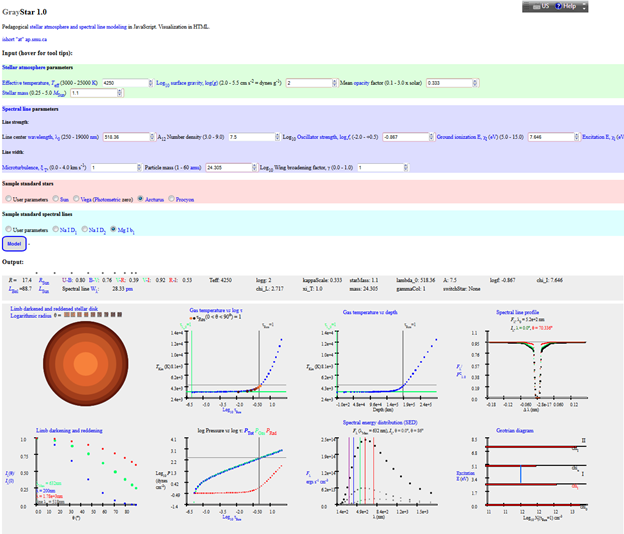Ian Short is an Associate Professor of Astronomy and Physics at Saint Mary’s University, has taught the core first and second year courses in the undergraduate astrophysics program, and is a published researcher in the field of stellar atmospheres and spectra.
Do you teach a course in which students should understand why some spectral lines are always strong in hot stars, but weak in cools stars, or vice versa? Or why some spectral lines are always broad in dwarfs, but narrow in supergiants? Or the role that radiation plays in supporting a star against its weight? Or why an image of the Sun is darker near the limb than at the centre? Or even why hot stars are blue and cool ones red, and how colour can be quantified? These, and many other similar questions, are central to the stellar component of the undergraduate astrophysics curriculum at the second year and above, and even in first year courses aimed at science majors, and are key concepts for students going into any area of astrophysics.
How would your teaching be enhanced if you could bring to class a virtual star equipped with “parameter knobs” that responds instantly when the “knobs” are adjusted? What if you could then equip each student with a virtual spectrograph, photometer, and interferometer so that demonstration-based classroom pedagogy can be employed? How would your course be enriched if you could assign laboratory-style homework projects in which students investigate the structure and observable behavior of such a virtual star and independently investigate key relationships? What possibilities would be opened up in more advanced courses if students could view and capture the source code for such a virtual star?
GrayStar is a stellar atmosphere and spectral line modeling, data simulation, and visualization application that employs simplifying approximations that allow it to compute models and corresponding observables in just a few seconds on any common PC, while still being realistic enough to demonstrate the key concepts itemized above, and more. It has been written in JavaScript and displays its results in HTML, so all that’s needed to compute models and display the results is any common Web-browser, even a mobile browser, running on any common PC-type computer or mobile device with any common operating system. It is guaranteed to run on any computer driving a classroom data projector, that is found in undergraduate computer labs, or that students themselves own, including netbooks and tablets. The input and output content is enriched with pedagogical tool tips and links, and a small set of sample models for different types of stars and spectral lines is provided, and all these can be edited by anyone who installs their own copy of GrayStar locally. More advanced students can access the source code using the standard Web-browser “developers’ tools”.
GrayStar is open source: the application itself, and the JavaScript and HTML deployment files needed for a local installation (and the optional Java development files) are all available at the GrayStar website: www.ap.smu.ca/~ishort/GrayStar. Users of GrayStar are encouraged to “like” GrayStar on Facebook, which will allow them to share their experiences, suggestions, and pedagogical ideas, and view those of other users, on the GrayStar Facebook page (www.facebook.com/GrayStarModels).
What kind of classroom demonstration or lab exercise could you develop with GrayStar? Please leave any suggestions in the comments or on the Facebook page!

Ian, have you considered putting the code on github? (http://readwrite.com/2013/09/30/understanding-github-a-journey-for-beginners-part-1)